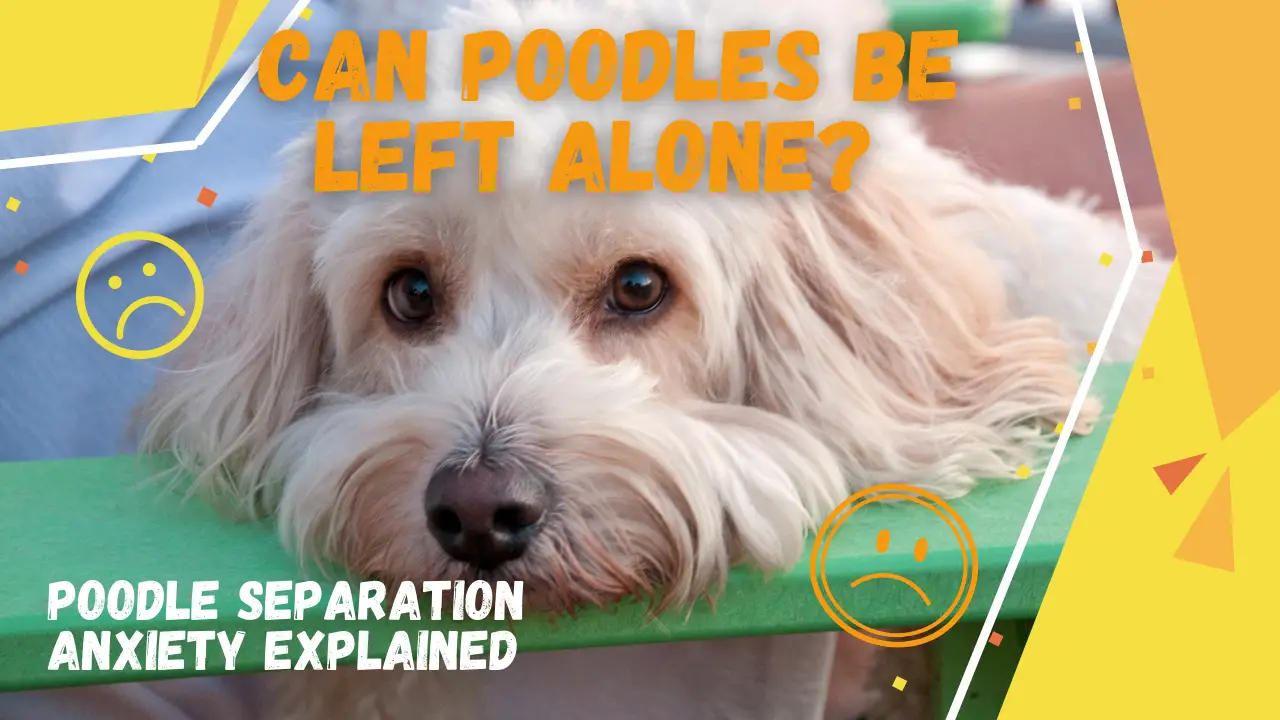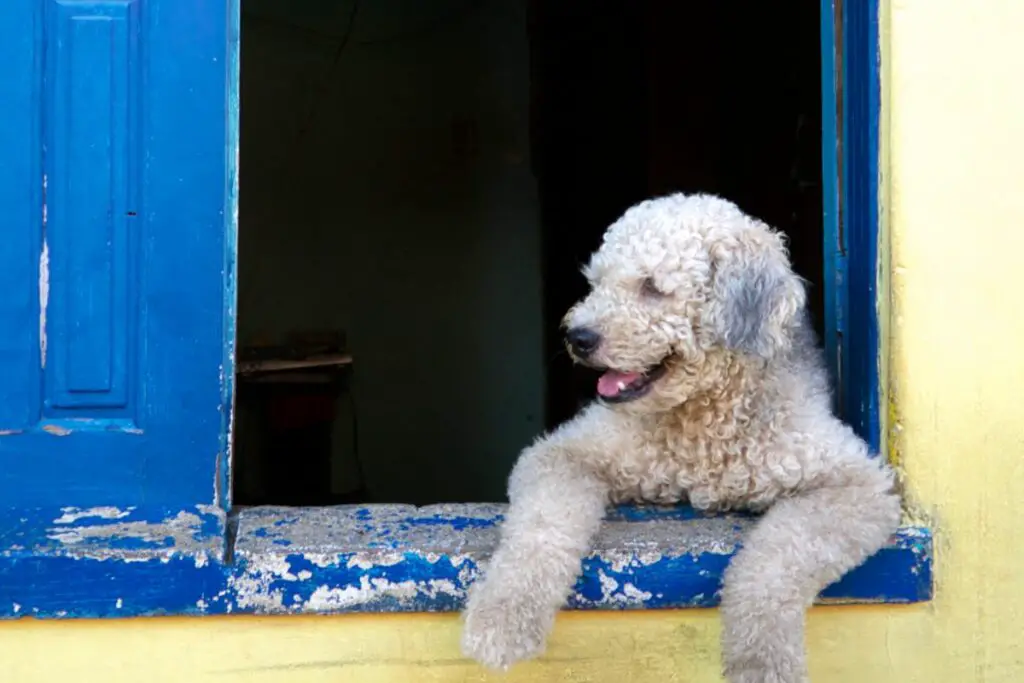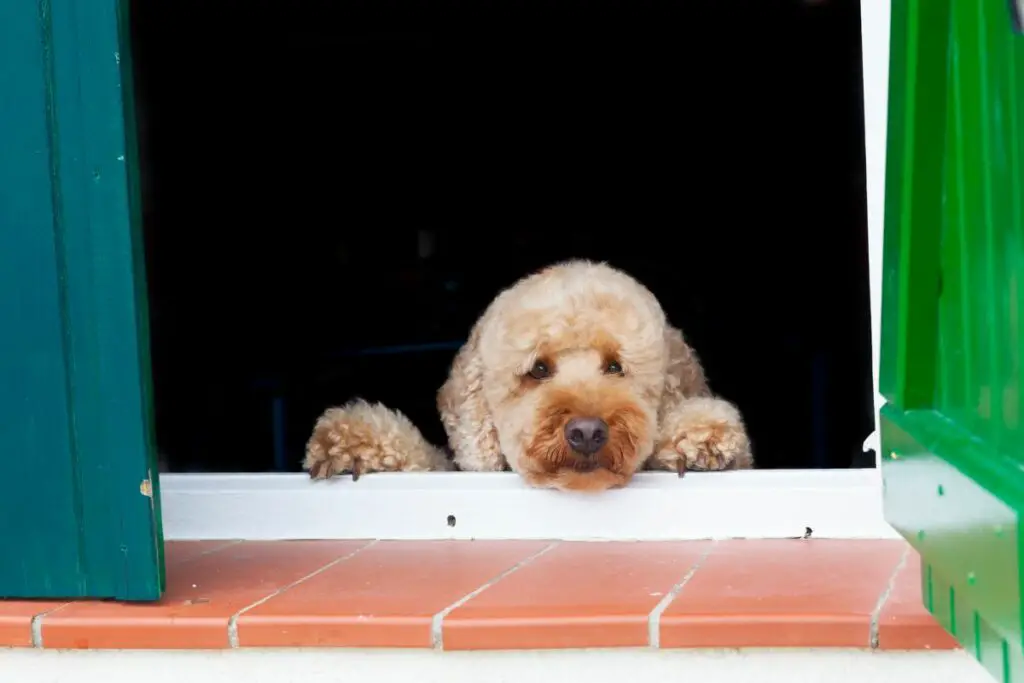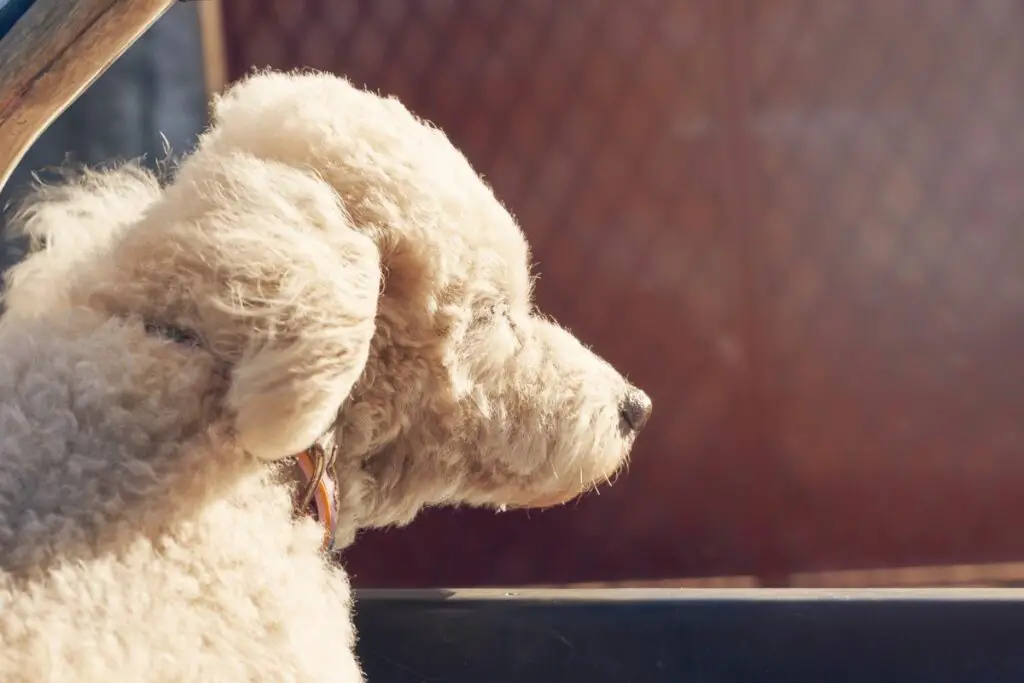If you’ve ever considered getting a poodle, you may have wondered if they can be left alone. Poodles are often considered to be high-maintenance dogs, but the truth is that they can be pretty independent. Here’s everything you need to know about leaving your poodle alone.

What Will You Learn? 👇
Can Poodles Be Left Alone?
Changing routine, welcoming a new baby, moving to a new house, or being gone for a long time can create separation anxiety. This can cause emotional and behavioral issues in dogs. These issues can manifest as panic, excessive barking, hyperactivity, or destructive actions.
Some Poodles can handle separation better than others. This can vary based on the situation, type of poodle, and whether your dog is a puppy or an adult. Some dogs are fine for a couple of hours, while others might freak out after 45 minutes left alone.

Read our Smart Poodles - Smart Tricks eBook for only $2.99
Dive into a treasure trove of engaging tricks and tips designed specifically for your poodle!
The fact is that some Poodles can be left alone, while others cannot tolerate their owner’s absence. It all depends on YOUR dog. That’s why it’s crucial to watch and test your dog to figure out its coping limits and how to help them feel more secure while you’re gone.
Are Some Types of Poodles Better at Being Home Alone Than Others?

All types of Poodles have high energy levels and need a lot of activity and mental stimulation to keep them happy and healthy. They are brilliant dogs who respond well to crate and indoor training. They are also people-pleasers who crave constant attention and love being around their owners. If left alone for too long, most Poodles will become unhappy and might start to develop bad habits.
Some Poodle types and ages can handle being left alone for a normal time better than others. For example, a larger dog can cope with some alone time better than a small dog. Similarly, an adult dog is more mature than a puppy and less likely to panic about seeing you leave.
Standard Poodle
Standing at least 15 inches tall and weighing 45 to 70 pounds, the Standard Poodle is the largest dog in the breed. They can range from medium to big sizes. Their alert, protective, and brave instincts make them excellent guard dogs. They may be more likely to bark if they sense danger or a change in the atmosphere.
While they are playful and friendly, they have better stamina when it comes to being alone than smaller Poodles. A Standard Poodle is less likely to handle being alone if they aren’t well-trained.
Miniature Poodle
Despite its name, the Miniature Poodle is more of a mid-size dog that stands anywhere from 11 to 15 inches tall and weighs from 14 to 18 pounds. Bursting with personality, observant, and friendly, they make great family pets. They tend to act a little more anxious than the larger Standard Poodle when their owner goes away.
Toy Poodle
This tiny, lively ball of fluff, standing at 8 to 10 inches tall and weighing just 6 to 9 pounds, loves to cuddle up with you like a lap dog. These pint-sized dogs bond hard with their owners and struggle with separation.
Research suggests that a Poodle can be left alone for as long as they can go without needing to use the bathroom. A basic rule of thumb states that you can leave a Poodle alone for 1 hour per every month of age. So, for example, you can leave a 3-month-old puppy alone for a maximum of 3 hours. Just estimate the hours vs. age for your dog’s current age.
Here’s a handy chart that will help you figure out how long you can leave a Poodle up to a year old:
| Poodle Age | Hours Left Home Alone |
| 1-month-old | 1 hour alone |
| 2-month-old | 2 hours alone |
| 6-month-old | 6 hours alone |
| 7-month-old | 7 hours alone |
| 11-month-old | 8-9 hours alone |
| 12-month-old + | 8-9 hours alone |
While this is a good rule to follow, everything depends on how your individual dog reacts to being left alone. Start by testing your dog to determine what works best for them.
Separation Anxiety in Poodles

Just like babies, dogs can get separation anxiety when they’re apart from the adult figure that they’ve bonded to in their life. Poodles are no exception. That’s because, just like young children, dogs don’t understand object permanence. So when you leave, they think you’re never coming back. Depending on the dog, this can happen whether you leave the house or just walk into the next room.
There are two main situations where a poodle is likely to experience separation anxiety. If you are gone for a long time, or if big changes happen in their environment.
If your poodle is displaying some of the following symptoms after being left alone, they may be suffering from separation anxiety:
- Crying or howling
- Nonstop barking
- Destroying furniture or other objects
- A rise in housebreaking accidents
- Extreme behavior when the owner leaves
- Desperate excitement when the owner comes back
If your poodle is experiencing canine isolation anxiety and can’t handle staying alone, there are ways to help them feel better. You can soothe their nerves and help them cope when you need to leave.
How Can You Help Your Poodle with Separation Anxiety?
One of the simplest ways to help your poodle with separation anxiety is to leave quickly and quietly. Smothering your dog with hugs and kisses and then walking out the door will make your pet realize what’s going to happen.
A Poodle can dread goodbyes since they think you’re leaving forever.
When you get ready to go out, put your poodle in a safe area with food, water, and fun, interactive toys to distract them. Act like nothing is happening. Once they are distracted, slip out the door. While this might seem counterintuitive or like you’re tricking your dog, they will handle your absence much better if they don’t see you leave.
Train them to be left alone
You can do this by gradually increasing the time that you leave your pup alone. Start by leaving them alone for a few minutes at a time, and then returning back casually. Continue the process with varying time frames until you’ve reached up to an hour. Then, you can start leaving your pup for longer periods of time.
Always remember to never make your returns a big deal either. If you reunite with your dog with a massive sense of positivity and excitement, this can feed into their separation anxiety in the long run.
If you have to leave for a long time, enlist family and friends, or hire a dog sitter to give your poodle some company.

If you’re not around, you can give your poodle a piece of clothing that has your scent on it. That will make them feel like you’re still there.
A quiet space can also drive a Poodle to distraction. Turn on the lights, the radio, TV, or play a recording of your voice to help keep your Poodle calm. You can even get a two-way audio camera to talk to your dog if they’re experiencing separation anxiety. Just the sound of your voice can calm them down.
It’s also a good idea to put your dog in a room that’s protected from outdoor street noise, other dogs barking, or distractions. This will help keep the dog calm and make it easier for people to look at the house. In addition, interactive puzzle toys with a treat inside are one of the best ways to keep your poodle occupied and distracted from the fact that they are alone.
Should You Leave Your Poodle Alone Outside in a Fenced Yard?
It’s not a good idea to leave your poodle outside alone, even in a fenced yard. First, a Poodle’s coat doesn’t withstand bad weather and might not keep the dog warm if the temperature drops. They can also overheat if left outside during the summer.
While keeping a Poodle in a crate for hours is not great, it’s better than leaving them outside. Poodles can get stressed and bark their heads off if left outside and surrounded by too much sensory input. This can result in harmful behaviors like hyperactivity, anxiety, and even losing their leash walking skills.
Final Thoughts
Keep your Poodle calm when you leave the house by making them feel safe and providing them with food, water, and fun toys to play with. Make sure you take your dog out for a walk before leaving to burn off extra energy and help prevent them from going bonkers when you leave.
Marko is the founder and author at PoodleHQ, where he blends profound expertise with formal training in Animal Behavior and Canine Genetics. With multiple generations of poodles under his care, he’s a breed connoisseur, honored with the Canine Care Excellence Award and lauded by the International Pet Enthusiasts Association.

